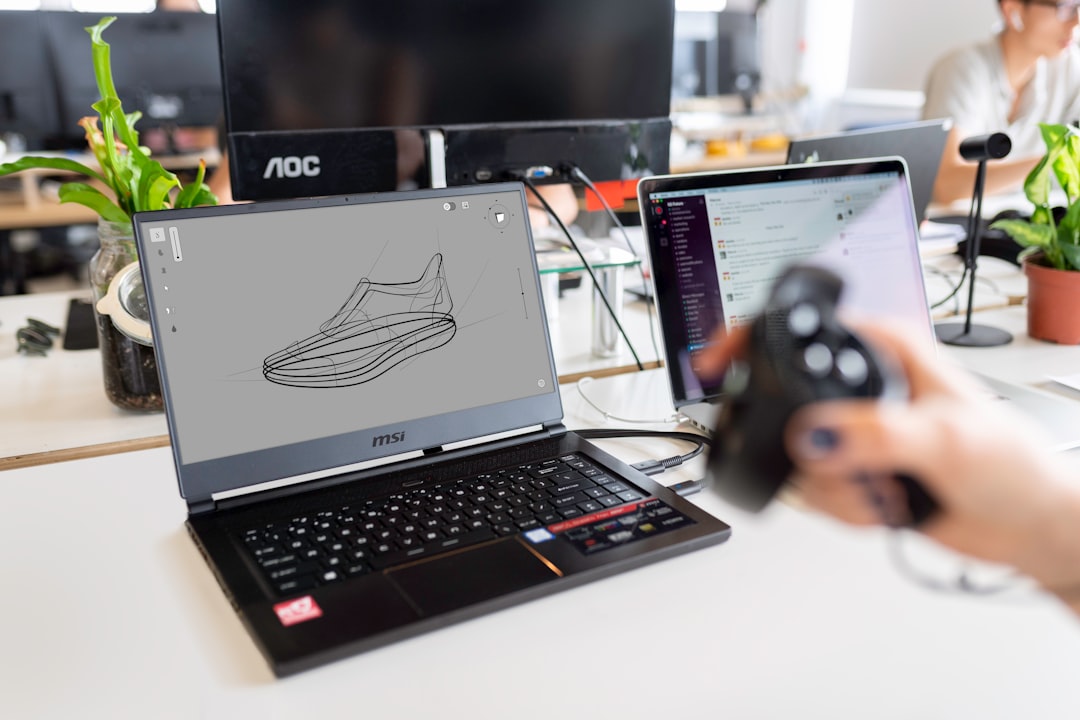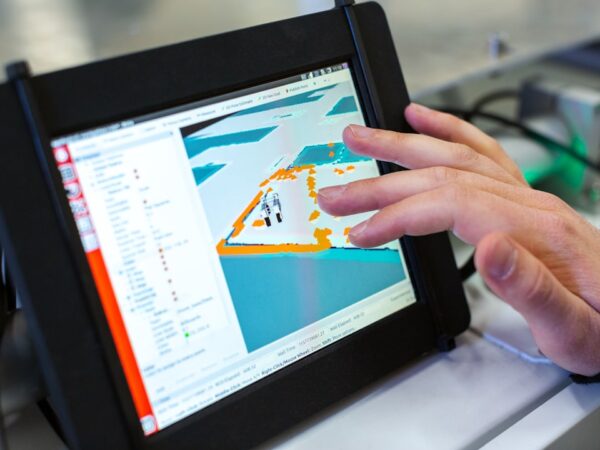
The Ultimate Guide to Sublimation Printing: Top Free Design Software for Stunning Results
Sublimation printing is a popular technique used to transfer designs onto various materials, such as fabrics, ceramics, and metals. It involves the use of heat and pressure to convert a solid dye into a gas, which then permeates the material and creates a vibrant, long-lasting image. This process allows for high-quality, full-color prints that are durable and resistant to fading.
One of the main benefits of sublimation printing is its versatility. It can be used on a wide range of materials, including polyester fabrics, mugs, phone cases, and even aluminum panels. This makes it an ideal choice for businesses in the fashion, home decor, and promotional products industries. Additionally, sublimation printing offers unlimited design possibilities, as it allows for intricate details and vibrant colors that are not achievable with other printing techniques.
Key Takeaways
- Sublimation printing is a process that involves transferring ink onto a substrate using heat and pressure.
- Understanding the science behind sublimation printing is important for achieving high-quality results.
- Sublimation printing has its pros and cons compared to other printing techniques, such as screen printing and direct-to-garment printing.
- There are many free design software options available for sublimation printing, but it’s important to choose the right one for your needs.
- Tips and tricks for creating stunning designs with free design software include using high-resolution images and experimenting with different color combinations.
Understanding the Science of Sublimation Printing
Sublimation printing works by using heat to convert a solid dye into a gas without going through the liquid phase. The design is first printed onto a special transfer paper using sublimation ink. When heat is applied to the transfer paper and the material to be printed, the ink turns into a gas and permeates the material’s surface. As the material cools down, the ink reverts back to its solid state and becomes permanently embedded in the material.
To achieve successful sublimation printing, several factors need to be considered. First, the material being printed on must have a high polyester content or be specifically coated for sublimation printing. This is because sublimation ink bonds best with polyester fibers. Second, the heat press machine used must provide even heat distribution and sufficient pressure to ensure proper ink transfer. Lastly, the printing process requires accurate timing and temperature control to prevent scorching or under-pressing.
Sublimation Printing vs. Other Printing Techniques: Pros and Cons
When comparing sublimation printing with other printing techniques, there are several pros and cons to consider. One of the main advantages of sublimation printing is its ability to produce high-quality, full-color prints with vibrant and long-lasting results. Unlike other techniques, such as screen printing or direct-to-garment printing, sublimation printing does not leave a noticeable texture on the material and allows for intricate details.
Another advantage of sublimation printing is its versatility. It can be used on a wide range of materials, including fabrics, ceramics, and metals. This makes it a popular choice for businesses in various industries, as it allows for customization of products such as apparel, home decor items, and promotional merchandise.
However, there are also some disadvantages to sublimation printing. One limitation is that it can only be used on materials with a high polyester content or specifically coated for sublimation printing. This means that natural fibers, such as cotton or silk, cannot be directly printed using this technique. Additionally, sublimation printing requires specialized equipment, such as a heat press machine and sublimation ink, which can be costly for small businesses or individuals.
Top Free Design Software for Sublimation Printing: A Comprehensive List
| Software Name | Price | Compatibility | Features |
|---|---|---|---|
| Inkscape | Free | Windows, Mac, Linux | Vector graphics, text editing, object manipulation, color management |
| GIMP | Free | Windows, Mac, Linux | Image editing, layers, masks, filters, color correction |
| Canva | Free (with paid options) | Web-based | Templates, graphics, text editing, photo editing, design elements |
| Gravit Designer | Free (with paid options) | Web-based, Windows, Mac, Linux, Chrome OS | Vector graphics, text editing, object manipulation, color management, templates |
| Adobe Spark | Free (with paid options) | Web-based, iOS, Android | Templates, graphics, text editing, photo editing, design elements |
When it comes to designing for sublimation printing, having the right software is essential. Fortunately, there are several free design software options available that are compatible with both Windows and Mac operating systems. Here is a comprehensive list of some of the top free design software for sublimation printing:
1. GIMP: GIMP (GNU Image Manipulation Program) is a powerful open-source image editing software that offers a wide range of features similar to Adobe Photoshop. It supports various file formats and allows for advanced editing and manipulation of images.
2. Inkscape: Inkscape is a vector graphics editor that is ideal for creating scalable designs for sublimation printing. It offers a user-friendly interface and supports features such as layers, paths, and text editing.
3. Canva: Canva is a web-based design tool that is perfect for beginners or those who prefer a simple and intuitive interface. It offers a wide range of templates, fonts, and graphics that can be easily customized for sublimation printing.
How to Choose the Right Design Software for Your Sublimation Printing Needs
When choosing design software for sublimation printing, there are several factors to consider. First, consider your level of experience and familiarity with design software. If you are a beginner, it may be best to start with user-friendly software such as Canva or GIMP, which offer intuitive interfaces and a wide range of templates.
Next, consider the specific features and tools that you require for your designs. If you need advanced editing capabilities and support for vector graphics, software such as Inkscape or GIMP may be more suitable. On the other hand, if you primarily work with photographs or require quick and easy customization options, Canva or Pixlr may be better choices.
Lastly, consider the compatibility of the software with your operating system. Most design software is available for both Windows and Mac operating systems, but it is always important to double-check before downloading.
Tips and Tricks for Creating Stunning Designs with Free Design Software

Creating stunning designs for sublimation printing requires a combination of creativity and technical skills. Here are some tips and tricks to help you create eye-catching designs using free design software:
1. Understand the principles of design: Familiarize yourself with basic design principles such as color theory, composition, and typography. This will help you create visually appealing designs that effectively communicate your message.
2. Use high-resolution images: When working with photographs or graphics, always use high-resolution images to ensure crisp and clear prints. Low-resolution images may appear pixelated or blurry when printed.
3. Experiment with different effects and filters: Most design software offers a wide range of effects and filters that can enhance your designs. Play around with these options to add depth, texture, or unique visual elements to your prints.
Best Practices for Preparing Your Designs for Sublimation Printing
To ensure the best results with sublimation printing, it is important to properly prepare your designs before printing. Here are some best practices to follow:
1. Use the correct color profile: When designing for sublimation printing, it is important to use the correct color profile. Most sublimation printers use the CMYK color model, so make sure your design is set to this color mode to avoid any color discrepancies.
2. Check image resolution: Before printing, always check the resolution of your images to ensure they are suitable for sublimation printing. Low-resolution images may appear pixelated or blurry when printed, so it is best to use high-resolution images whenever possible.
3. Mirror your designs: Since sublimation printing involves transferring the design onto a material, it is important to mirror your designs before printing. This ensures that the final print appears correctly when transferred onto the material.
How to Ensure Color Accuracy in Sublimation Printing
Color accuracy is crucial in sublimation printing, as it directly affects the final appearance of the print. Here are some techniques to ensure color accuracy:
1. Calibrate your monitor: To ensure accurate color representation, it is important to calibrate your monitor regularly. This involves adjusting the brightness, contrast, and color settings of your monitor to match industry standards.
2. Use color management software: Color management software can help ensure accurate color reproduction by creating profiles for your printer and monitor. These profiles help maintain consistency between what you see on your screen and what is printed.
3. Perform test prints: Before printing a large batch of designs, it is always a good idea to perform test prints to check color accuracy. This allows you to make any necessary adjustments before committing to a full print run.
Common Mistakes to Avoid in Sublimation Printing
While sublimation printing can produce stunning results, there are some common mistakes that can affect the final product. Here are some mistakes to avoid:
1. Using low-quality materials: Sublimation printing works best on materials with a high polyester content or specifically coated for sublimation printing. Using low-quality or incompatible materials can result in poor ink transfer and faded prints.
2. Incorrect heat and pressure settings: Proper heat and pressure settings are crucial for successful sublimation printing. Using incorrect settings can result in under- or over-pressing, leading to poor ink transfer or scorching of the material.
3. Not allowing sufficient cooling time: After the printing process, it is important to allow sufficient cooling time for the material before handling it. Premature handling can cause smudging or distortion of the print.
Troubleshooting Sublimation Printing Issues: A Guide to Fixing Common Problems
Despite following best practices, issues may still arise during the sublimation printing process. Here are some common problems and techniques for troubleshooting them:
1. Faded prints: Faded prints can be caused by several factors, including low-quality materials, incorrect heat and pressure settings, or expired ink. To fix this issue, try using higher-quality materials, adjusting the heat and pressure settings, or replacing the ink cartridges.
2. Blurry or distorted prints: Blurry or distorted prints may be caused by low-resolution images or improper heat and pressure settings. To fix this issue, ensure that your images have a high resolution and adjust the heat and pressure settings as needed.
3. Uneven color distribution: Uneven color distribution can be caused by uneven heat or pressure during the printing process. To fix this issue, ensure that your heat press machine provides even heat distribution and adjust the pressure settings as needed.
Sublimation printing is a versatile and high-quality printing technique that offers endless design possibilities. By understanding the science behind sublimation printing and following best practices, you can create stunning designs that are vibrant, durable, and long-lasting. With the help of free design software and the tips and tricks provided, you can unleash your creativity and explore the world of sublimation printing. So why wait? Start experimenting with sublimation printing today and see the amazing results for yourself.
FAQs
What is sublimation printing?
Sublimation printing is a process of printing designs onto a substrate using heat and pressure to transfer dye onto the material. This process is commonly used for printing on fabrics, ceramics, and other materials.
What are the benefits of using free design software for sublimation printing?
Using free design software for sublimation printing can save you money on expensive design programs. It also allows you to create custom designs for your products without having to pay for a professional designer.
What are some popular free design software options for sublimation printing?
Some popular free design software options for sublimation printing include GIMP, Inkscape, and Canva. These programs offer a range of design tools and features to help you create high-quality designs for your sublimation products.
What types of designs can I create with free design software for sublimation printing?
With free design software for sublimation printing, you can create a wide range of designs, including logos, graphics, patterns, and text. These designs can be printed onto a variety of substrates, including fabrics, ceramics, and metal.
What are some tips for using free design software for sublimation printing?
Some tips for using free design software for sublimation printing include familiarizing yourself with the program’s tools and features, practicing your design skills, and experimenting with different design elements and techniques. It’s also important to ensure that your designs are high-quality and suitable for sublimation printing.


















